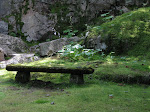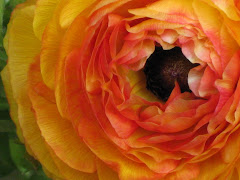 It is February and though a recent spring tease brought the crocus to life, the landscape is still drab, gray and barren. During the "off-season," I tend to re-read books and magazines for inspiration and ideas for spring and summer projects.
It is February and though a recent spring tease brought the crocus to life, the landscape is still drab, gray and barren. During the "off-season," I tend to re-read books and magazines for inspiration and ideas for spring and summer projects. Most recently, I spent some time with Pamela Harper's Time-Tested Plants, a book my favorite plants professor swore was the best for learning how to craft a four-season garden.
 Her book is divided into seasons, and highlights key trees, shrubs and perennials, that when combined, can bring the landscape beauty at any time of the year. Reading her section on autumn and winter reminded me of the plant I covet in February - Hamamelis x intermdiea, the witchhazel hybrids. She eloquently describes the flowers of the cultivar 'Jelena', which blooms the longest of the hybrids: "The blood-orange colors of its spidery apricot petals stretched out from crimson calyces bring a warm glow to the winter scene." Planted with southern exposure to the sun gives a natural backlighting, offering a coppery glow to warm the day.
Her book is divided into seasons, and highlights key trees, shrubs and perennials, that when combined, can bring the landscape beauty at any time of the year. Reading her section on autumn and winter reminded me of the plant I covet in February - Hamamelis x intermdiea, the witchhazel hybrids. She eloquently describes the flowers of the cultivar 'Jelena', which blooms the longest of the hybrids: "The blood-orange colors of its spidery apricot petals stretched out from crimson calyces bring a warm glow to the winter scene." Planted with southern exposure to the sun gives a natural backlighting, offering a coppery glow to warm the day.Michael Dirr, noted horticulturist and king of all things woody plants, questions "[w]hy these plants are not in greater use is beyond me." Besides their contribution to bringing one out of the winter doldrums, they offer brilliant fall color and an interesting upright, spreading, loosely branched form.



No comments:
Post a Comment